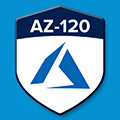
Duration: 4 Days
After completing this course, students will be able to:
Candidates for this exam should be architects or engineers with extensive experience and
knowledge of the SAP system landscape and industry standards that are specific to the initial
migration or integration and the long-term operation of an SAP solution on Microsoft Azure.
Responsibilities for an architect or an engineer for Azure for SAP Workloads include making
recommendations on services and adjusting resources as appropriate for optimal resiliency,
performance, scale, provision, size, and monitoring.
Architects or engineers for Azure for SAP Workloads partner with cloud administrators, cloud
database administrators, and clients to implement solutions.
A candidate for this exam should have extensive experience and knowledge of SAP applications:
SAP HANA, S/4HANA, SAP NetWeaver, SAP BW/4HANA, OS servers for SAP applications and
databases, Azure portal, Azure Marketplace, Azure Resource Manager templates (ARM
templates), virtualization, cloud infrastructure, storage structures, high availability design,
disaster recovery design, data protection concepts, and networking.
For this exam, we strongly recommended that you have an Azure Administrator Associate or
Azure Solutions Architect Expert certification, in addition to SAP certifications.
Administrators and architects of Azure solutions for SAP should possess solid knowledge of SAP Applications, SAP HANA, S/4HANA, SAP NetWeaver, SAP BW, OS Servers for SAP Applications and Databases.
Prior to taking this course, it is recommended that students to have taken the Azure Administrator (AZ-103) or Azure Solutions Architect (AZ-300) training, as well as SAP HANA and Linux training.
Design and implement a compute solution for SAP workloads
Design a high availability and disaster recovery solution for SAP on Azure Virtual
Machines or Azure HLI
The trainer will be Microsoft Azure Professional.
£1,799+VAT
Clientele ➞























Our Partners




